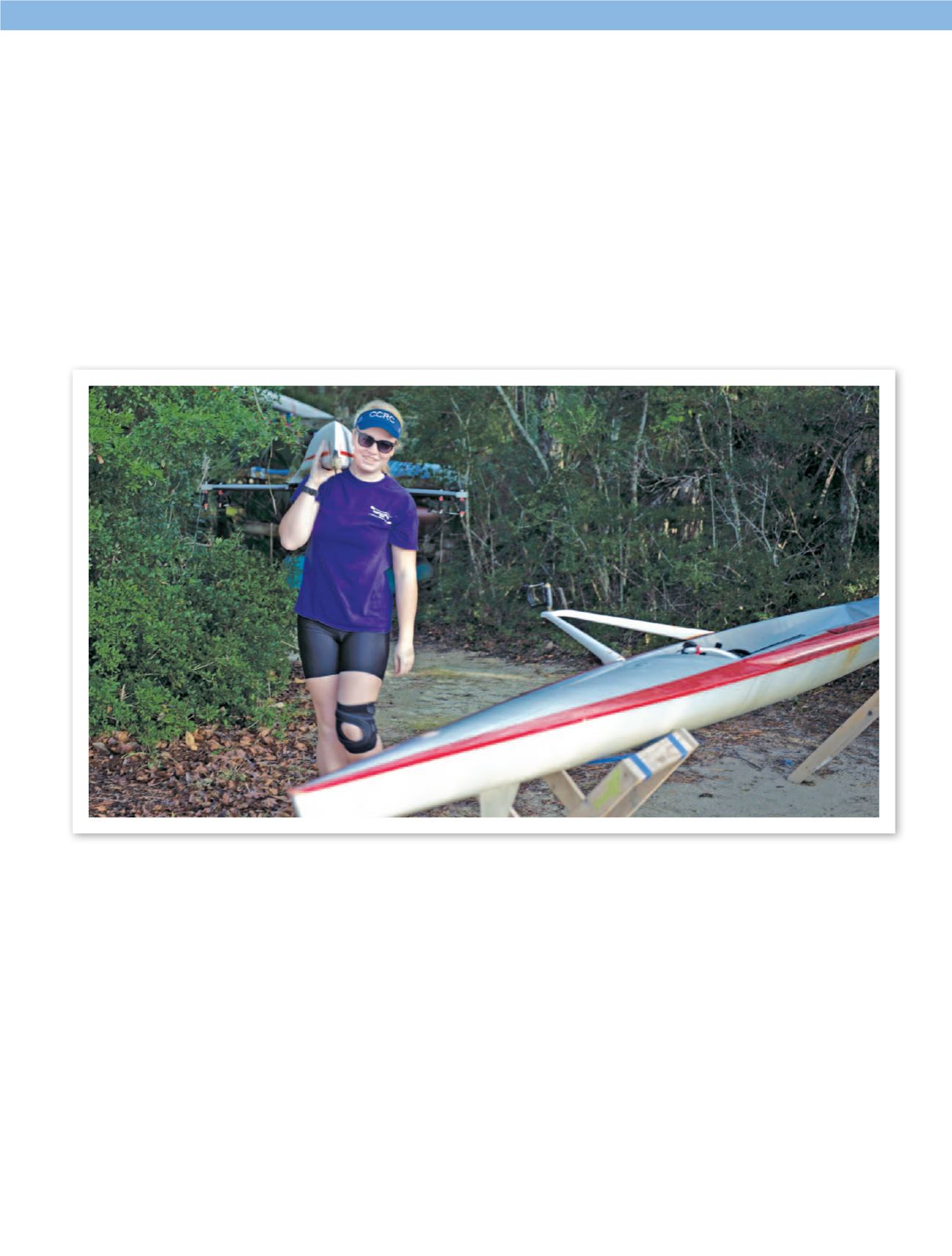

29
www.MountPleasantMagazine.com|
www.BestOfMountPleasant.com|
www.ILoveMountPleasant.comthat pastime a tad too expensive. He had an epiphany in
1987 after reading a book about open-water rowing.
“I said ‘That’s what I want to do,’” he explained.
Blyth now teaches the younger members of the
Charleston Rowing Club the basic rowing strokes, while
D’Italia trains them for competition. Blyth also does his best
to pass along his own personal outlook about the sport.
“My philosophy is that rowing is fun and an
adventure,” he said. “And without realizing it, you get a
really good workout. But it’s not a chore. You shouldn’t
think of it like exercise.”
D’Italia, obviously more serious than Blyth about the
competitive aspect of the sport, pointed out that there are
two major categories of rowing. In a sweep boat, there can
be two, four or eight rowers, each handling one oar that is
around 12 feet long. In an eight-person boat, there might
also be a coxswain who steers the vessel and coordinates
strategy, which is especially important in a head race,
which generally runs along the course of a river.
Strategy is key, according to D’Italia, because it is
difficult to turn a boat that might be more than 60 feet
long. And, in a head race, a half dozen or more vessels
could be maneuvering to wend their way through an
area wide enough to accommodate only one or two
boats at a time.
A sculling shell, on the other hand, can be propelled
forward by the efforts of one, two or four rowers, each
handling two oars that are around 9-and-a-half feet long.
In addition to head races, where strategy is paramount,
rowers compete in straight-line, 2,000-meter sprints.
D’Italia said an eight-man boat can travel at speeds of up
to 24 mph, while a single scull can cover 2,000 meters in
seven to eight minutes.
He added that the shape of the oars and boats has changed
over the years, all for the purpose of increasing speed.
“Everyone is moving in the same direction with a
single thing in mind – as much speed as possible,” D’Italia
said. “The whole idea is a graceful, flowing movement,
dictated by the physics of the boat moving forward as
quickly as possible.”
When he was racing with Vesper and Malta, D’Italia
would row 800 to 1,000 miles per season, physical training
that is necessary for competitive rowers.
“In a 2,000-meter race, after about 500 meters, you’re
already oxygen-deficient,” he explained. “You have to learn
to force your body to work through that and still perform.
Your muscles are burning.”
D’Italia admitted that he no longer trains as diligently
Grace Ford-Dirks prepares to put her scull in the water.
















